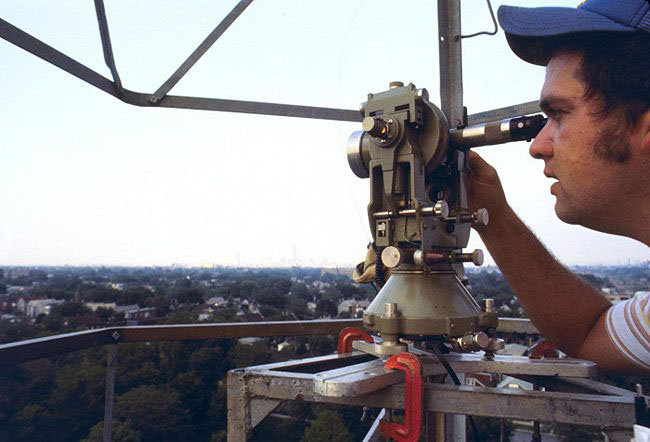Theodolite

The Precision theodolite, later known as the "T-3" theodolite was introduced in 1925. With its 10.5-inch telescope, this theodolite had a range of up to 60 miles. It saw heavy use between 1952 and 1984.
The theodolite was used to measure horizontal and vertical angles, and it remained the backbone of geodetic surveys from the 1800s until the early 1980s.
Basic use of a theodolite required that the instrument be mounted on a stable tripod or stand and be carefully plumbed over the survey station. Line-of-sight was necessary between stations, since observers had to carefully sight on or align with a target during measurements. Observers would record a series of readings and average the results to determine final angles.

